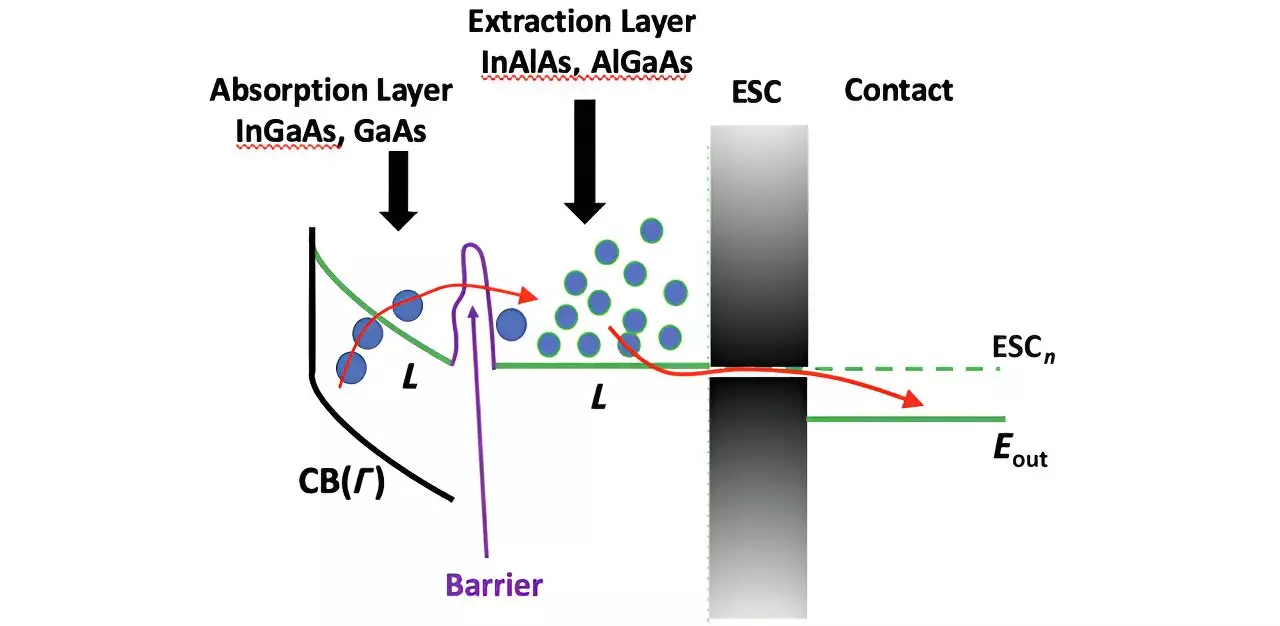Hot carrier solar cells represent an innovative approach in the quest for higher solar energy conversion efficiencies. This technology, which emerged decades ago, aims to overcome the Shockley-Queisser theoretical efficiency limit—an established boundary that confines the performance of traditional single-junction solar cells. The fundamental concept behind hot carrier cells is intriguing: they aim to take advantage of “hot” electrons—those that carry excess energy from sunlight—before they dissipate their energy as heat. However, translating this high-potential concept into practical applications has been mired in challenges, most notably the efficient management of these hot electrons across material interfaces.
A significant barrier to the implementation of hot carrier solar cells lies in the intricate interactions that occur at the interfaces between different materials, specifically during the process of hot electron extraction. Recent studies have highlighted a parasitic barrier that forms at the heterostructure interfaces between the absorbing layer and the extraction layers. This barrier presents a hindrance when energy bands of connected materials are not ideally aligned, preventing the smooth transfer of electrons. Instead of occurring seamlessly across momentum space, the transfer often transpires in real space, complicating the overall efficiency of the system.
As the need for greater efficiency in solar technology intensifies, breakthroughs in understanding these electron transfer mechanisms have become critical. One noteworthy advance has involved examining the role of satellite valleys in the conduction band, where hot electrons could be temporarily stored. By tapping into these valleys, researchers hope to enhance collection efficiency. However, despite these advancements, the unpredictability of electron tunneling at the material interfaces continues to pose a challenge.
A recent study published in the *Journal of Photonics for Energy* has shed light on these complex tunneling dynamics through a sophisticated empirical pseudopotential approach. By mapping energy bands in momentum space and harmonizing them with experimental data, the research team has made strides in revealing the intricate physics of electron transfer at heterointerfaces. They discovered that the tunneling coefficient—a crucial measurement of electron transition ease—is disproportionately large in indium-aluminum-arsenide (InAlAs) and indium-gallium-arsenide (InGaAs) structures due to the inherent mismatch in energy bands.
Moreover, even minor irregularities at the interface, at just a few atomic layers in thickness, can severely disrupt the electron transfer process. This aligns with observed inefficiencies in experimental devices that utilize these material systems. Yet, hope is not lost; the study also revealed that better performance is achievable in systems comprising aluminum gallium arsenide (AlGaAs) and gallium arsenide (GaAs). The unique qualities of these materials create a degeneracy in the lower satellite valleys, leading to enhanced alignment of energy bands and a pathway for precise atomic layer growth.
The findings present a promising avenue not only for understanding current limitations but also for architecting future devices. The ability to achieve a tunneling coefficient of as high as 0.5—or even 0.88—between AlGaAs and GaAs structures indicates a more favorable environment for electron transfer. Such efficiencies could catalyze the development of valley photovoltaics, which aim to capitalize on the unique properties of valence states within materials to push beyond existing single bandgap boundaries.
Interestingly, the research also examined systems like high-electron mobility transistors wherein electron movement is critical. While conventionally, it is preferable for electrons to stay within GaAs, the phenomenon of hot carriers transferring back into AlGaAs—termed real-space transfer—could instead be harnessed beneficially for valley photovoltaic applications. This perspective shift emphasizes the dual nature of material properties—the very challenges that inhibit current technology may also unlock new potentials in energy efficiency.
As the global focus shifts toward renewable energy sources, the development of hot carrier solar cells represents a frontier of innovation in solar technology. Understanding the complexities of material interfaces and tuning these systems for optimal electron transfer can lead us closer to overcoming the efficiency limits that have restricted solar energy advancements. With continued research and experimentation in this field, there is a distinct possibility that the dream of surpassing traditional efficiency benchmarks in solar cells can become a reality, ultimately contributing to a more sustainable future.



Leave a Reply